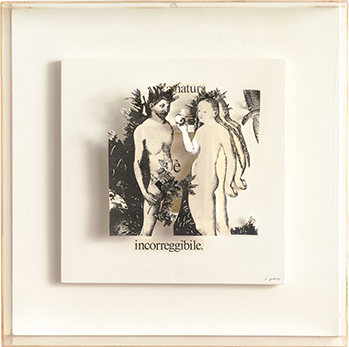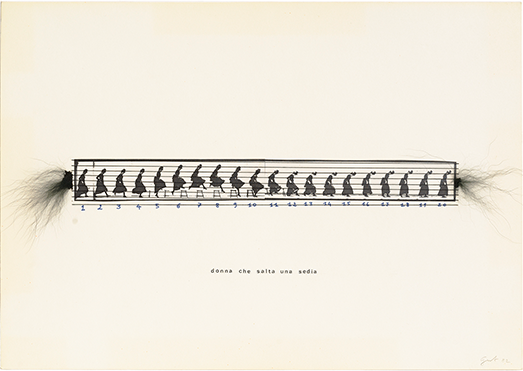My relationship with Elisabetta Gut consolidated during her solo exhibition Semi e Segni at the Cortese & Lisanti gallery, curated by Mirella Bentivoglio in 2009. In the following year she was invited by Mirella Bentivoglio to participate with two works in the exhibition Venti libristi, an important event dedicated to the book-object.



The figure of Elisabetta Gut is featured in the major group exhibitions I have curated in recent years at Gramma_Epsilon in Athens, and since her death I have been examining her archive.

“In her youth she walked all the steps of a real artistic preparation, with professional precision and then, luckily, she joined the groups of the new experimental poetry. And she made this choice despite having all options open in the field of the pure visual arts; esteemed by artists like Lucio Fontana and rigorous critics like Nello Ponente, she made her decision in total loyalty to herself. In the mix of codes, that is, in the combined use of writing and image, she has rediscovered the freedom from any scheme typical of the childhood, the immediate freshness of mankind and history pervaded by nature.”
Mirella Bentivoglio in Seeds and Signs, 2009


Elisabetta Gut was born in Rome in 1934 but spent her childhood in Zurich. In Rome she attended the Institute of Art and after an initial painting experience of post-Cubist and eventually of informal imprint, she approached the verbo-visual neo-avantgarde that was emerging in literary circles. She began to experiment the relationship between image and writing, creating collages and assemblages where she added scriptural fragments and plant elements.

“For this artist, denial and affirmation are identical. She was the first one to use the wire both as a symbol of deletion and musical notation, as a pentagram and a string for inaudible vibrations at the same time. And it is precisely that surliness that guarantees intensity. The difficult part in operations like these, when taking up an iconography widely characterized as poetic, is the ability to remove it from any established poeticism, to regain, thanks to the magisterium of fantasy, a native freshness within the very structures of culture.”
Mirella Bentivoglio in Plume de Poète, 1989